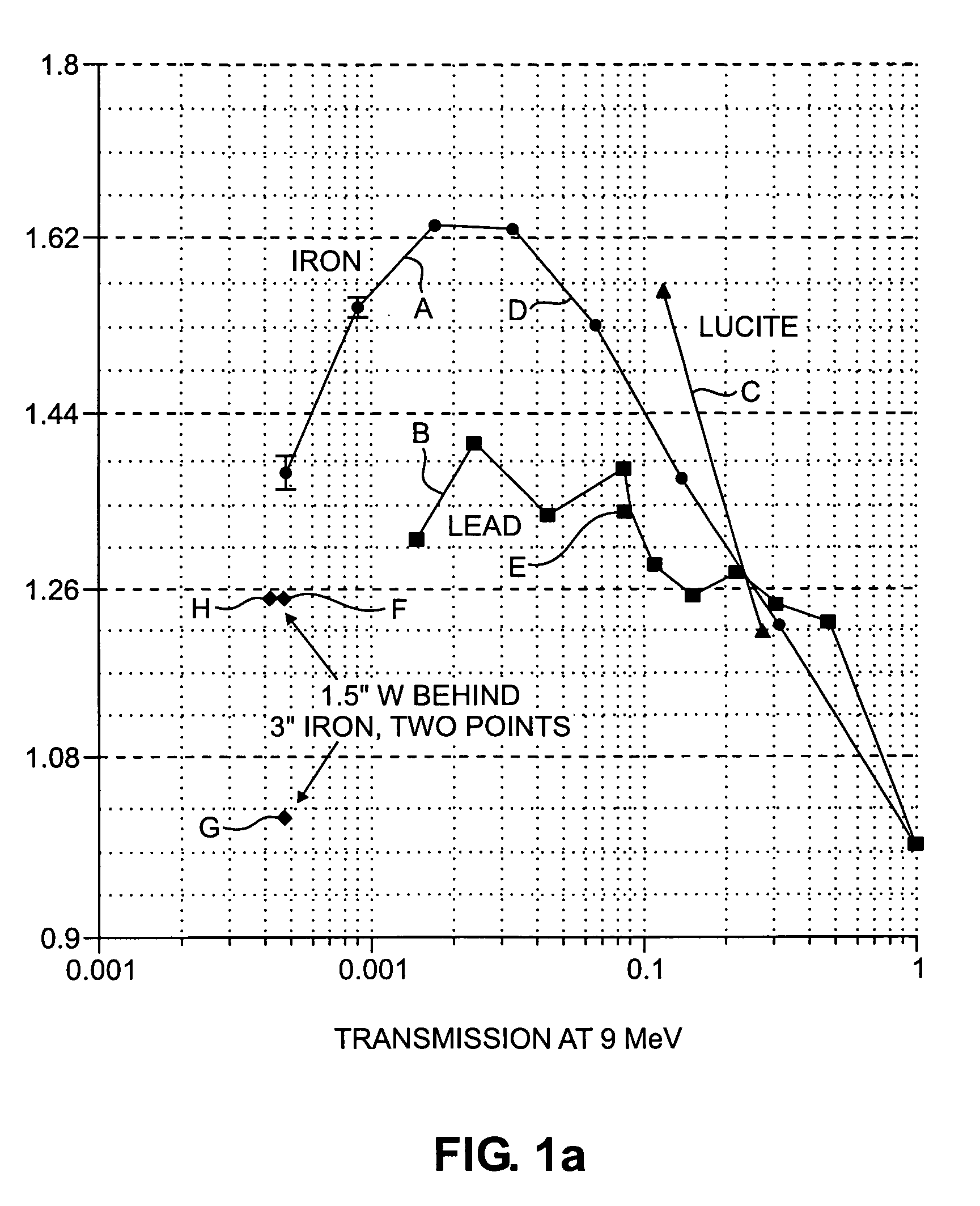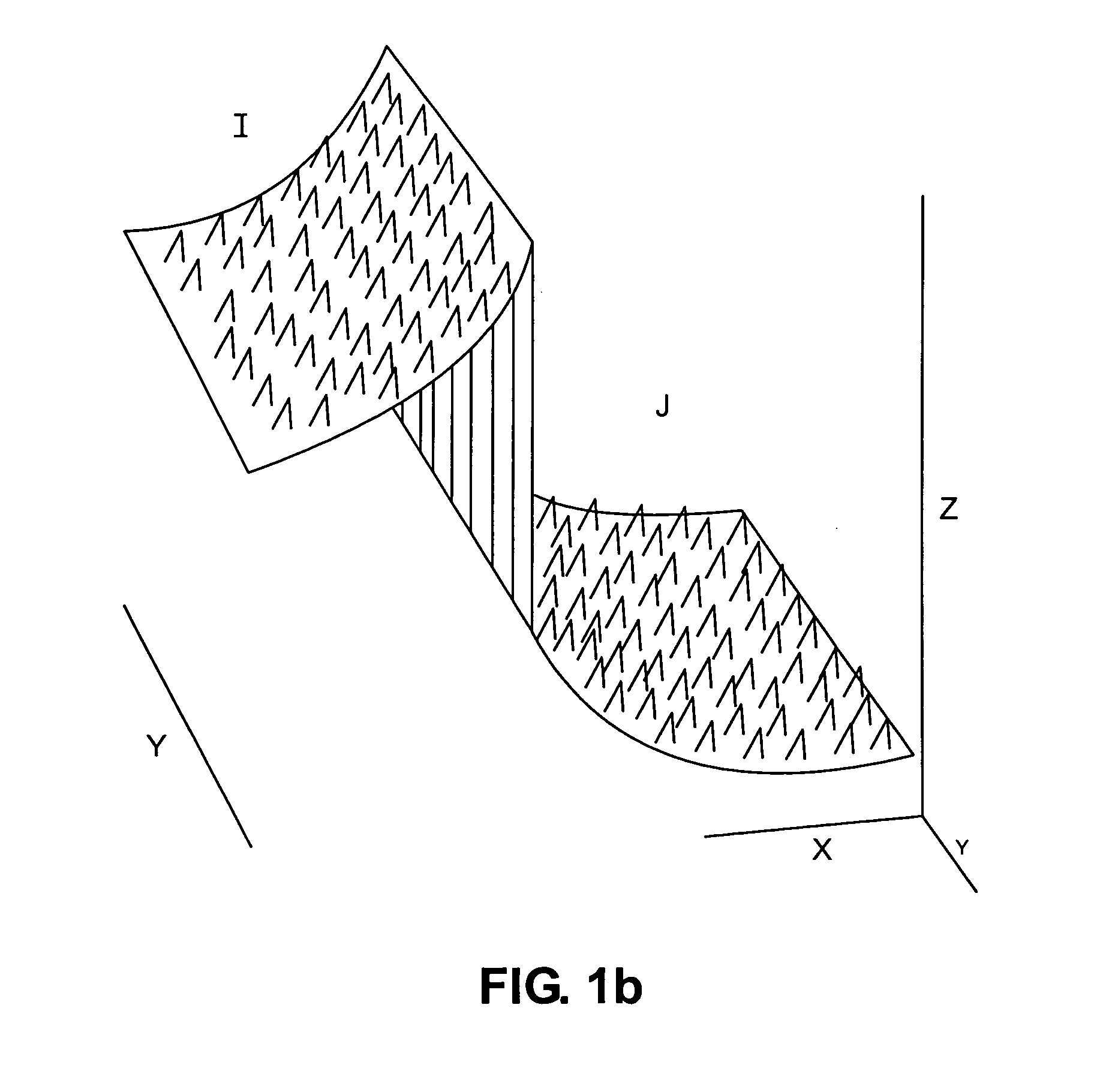Dual energy radiation scanning of contents of an object
a technology of energy radiation and contents, applied in the direction of material analysis, material analysis using wave/particle radiation, instruments, etc., can solve the problems of reducing the detection of true positives and reducing the sensitivity, so as to improve the specificity and sensitivity of conclusions
- Summary
- Abstract
- Description
- Claims
- Application Information
AI Technical Summary
Benefits of technology
Problems solved by technology
Method used
Image
Examples
Embodiment Construction
[0045]In accordance with embodiments of the invention, a function of the transmission or attenuation of radiation through an object at two different energies is used to classify the object or items or regions within the object as a high atomic number material (“HANM”), which may be a nuclear material or shielding for such material. The function may be a ratio. The ratio or other such function may be compared to the same function of transmission or attenuation of radiation at the same two energies through a test material of known atomic number. Material may be classified as HANM if it has a higher atomic number than the test material. The test material may be any material with an atomic number less than the atomic number of a material of concern. The test material may be iron, for example. The object may be a cargo conveyance, for example. Also, in accordance with embodiments of the invention, the determination may be made to a desired degree of statistical confidence.
[0046]Iron has ...
PUM
| Property | Measurement | Unit |
|---|---|---|
| atomic number | aaaaa | aaaaa |
| atomic number | aaaaa | aaaaa |
| atomic number | aaaaa | aaaaa |
Abstract
Description
Claims
Application Information
 Login to View More
Login to View More - R&D
- Intellectual Property
- Life Sciences
- Materials
- Tech Scout
- Unparalleled Data Quality
- Higher Quality Content
- 60% Fewer Hallucinations
Browse by: Latest US Patents, China's latest patents, Technical Efficacy Thesaurus, Application Domain, Technology Topic, Popular Technical Reports.
© 2025 PatSnap. All rights reserved.Legal|Privacy policy|Modern Slavery Act Transparency Statement|Sitemap|About US| Contact US: help@patsnap.com



